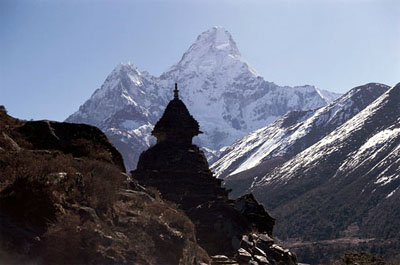Dec 23, 2025
Dec 23, 2025

The events in Nepal in the past few months have been truly transforming. This Himalayan nation has within the span of a few weeks transformed from the world's only Hindu monarchy to a people's republic and from insurgency to democracy. This shift has been truly dramatic particularly when we recount that in May the Maoists were being strafed by (Royal) Nepal Army's helicopters and today are sitting across the table with the political hoi polloi in Katmandu.
Nepal's problems lay in the neglect of the masses by the royalty ensconced in palace intrigues in the capital. Thus no development worth the name took place in the distant hills and valleys of the poor and under developed region with a harsh climate in most parts of the country. The glasnost in other parts of the World reached the country rather late in the early 1990's but it spread like wild fire till by 2000 Nepal was in the grip of the Maoists, deadly home grown guerrillas who had virtually forced the army and the police behind the safety of barricades in their garrisons.
King Gyanendra who had assumed the throne against the backdrop of the fratricidal killings in the family lacked the sagacity of a modern ruler who could read the writings on the wall and devolve power to the people. He dissolved the Parliament and imposed his draconian rule further alienating the people. His Eastern neighbor Jigme Singe Wangchuk of Bhutan on the other hand laid out a well charted path for progressive reduction of the role of monarchy in the affairs of the state.
The Monarch thus lost all sympathy not only of his people but also his more sympathetic neighbor India, which veered from its policy of supporting him against a violent movement to creating atmosphere for transfer of power to the people. Thus the traditional Indian establishment which is wary of an active role in regional polity backed an agreement between the political parties in Nepal and the Maoists in December, despite the likelihood of an adverse fall out at home, where large swathes of the country were in the grips of a communist rebellion. India's stand was backed by the United States and Britain providing it much needed multi national support. Thus the King should have seen the writing on the wall but appeared unmoved and gesticulated towards China in the North.
India's support however was the opening which the political parties, the Maoists and the people in Nepal were looking for. The result was outpourings on the streets of Katmandu for days disrupting normal life in the capital as well as many other parts of the country. The anger of rampaging mobs outside the Palace and lack of support from abroad finally drove home the point to the King and he abdicated power in June this year.
The troubles in Nepal are however far from over, for to restore democracy in a system which had been abused by authoritarian rule and bringing gun toting rebels into the political mainstream are huge challenges. A series of meetings, discussions and confabulations between the political parties led by the patriarchal Prime Minister, Mr. G P Koirala and the much subdued Maoists leaders Prachanda and Baburam Bhattarai has evolved a Common ' which provides the frame work for reestablishing governance in the country including disarming of the Maoists under the aegis of the United Nations.
Undoubtedly there are many obstacles to surmount before peace and order is restored in Nepal. There are already rumblings within the political system with the Royalist parties wanting a constitutional role for the King. The people also seem to be against total alienation of the royalty. This is however anathema to the Maoists. There are also many break away groups within the communist ranks and the ability of the central leadership to control them is largely unknown. Some fringe elements are continuing with their campaign of extortion and crime which does not bode well for the future.
03-Dec-2006
More by : Col. Rahul K. Bhonsle